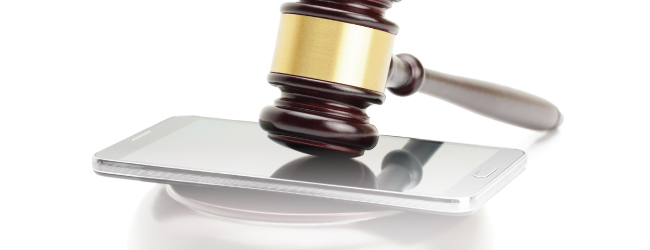
Telephonic Appearances and Your Practice
It is now 2016, and technology abounds. Silicon Valley (our neighbor to the south) is at historic heights. Its innovations have transformed the world we live in by making things more efficient and more affordable. It is now all but considered a given that a person—especially a lawyer—can use their smartphone, computer or tablet device to video conference or make telephone calls.
In some cases, making such calls over the web occurs with better voice quality than from cellphones or even landlines. With all this technology sprouting and thriving around us, lawyers nevertheless seem hesitant to use such technologies, especially when making a court appearance, meeting a client or participating in mediation.
Believe it or not, there is a California Rule of Court—Rule 3.670—that codifies the legislature’s intent to promote appearances in court by telephone in civil cases. The rule of court is designed to improve access to the courts and reduce litigation costs. The rule specifies various circumstances where a telephonic appearance is not permitted, such as trials, hearings on temporary restraining orders, settlement conferences, trial management conferences and various other hearings.
This general policy of promoting and encouraging telephonic appearance is one that has even extended to allowing video appearances, which are permitted in Los Angeles and Merced counties. There is generally a fee of $86 to $100 or more for a court call and a several hundred dollar fee for video call appearance. Telephonic appearances require landlines, although some attorneys use their cellphones for the calls either because they are out of the office when the call occurs or they no longer have a landline.
If you use a cellphone, make sure that you have sufficient battery, as you may be on hold for over an hour before your case is called. The provider for all telephonic appearances in California is CourtCall.
Even with the public policy to promote telephonic court appearances, many lawyers keep going to court or refuse to make telephonic appearances. There are many reasons for this: Getting face time (not the iPhone FaceTime, but real face time) with a judge and other lawyers, getting a feel for the courtroom, and probably what most of us courtroom litigators know to be the case—avoiding technological glitches like bad voice quality or being disconnected from a call. Some do it for the less legitimate reason that it allows them to bill more time to a file.
The reality is that unless there is a comfort level with the court and opposing counsel, appearance by telephone can be risky. If opposing counsel likes to file papers the day of the hearing, then an attorney appearing by court call will be unable to see the filed papers and will have some explaining to do to the client. If an unknown party or witness appears at a routine hearing, then a person appearing by court call cannot meet with the surprise person in the hallway prior to court or even during a recess from court to discuss matters.
Some lawyers have clients who insist their lawyer appear in court because they wish to appear in court (let’s be honest, it looks awkward when an attorney calls in while their clients are sitting in court by themselves).
Aside from court, some clients simply do not have the means or the technology to communicate by video call. Some mediators refuse to allow participants to call into mediation or appear by video call, insisting that they need the individuals present in order to have the desired effect intended during the mediation session. Some lawyers and clients who appear in person to a court appearance or mediation take the lack of a physical appearance by the other attorney as disrespectful.
In other words, even though the technology is available and encouraged, there are numerous reasons why lawyers, clients and mediators insist on personal appearances and resist the use of court call or video call technology.